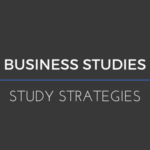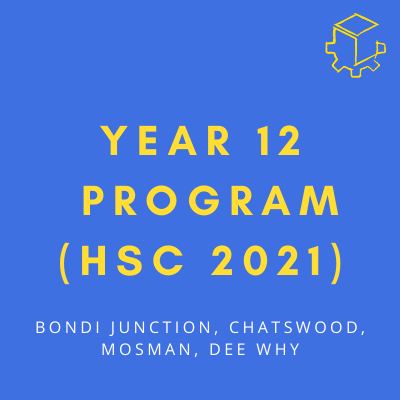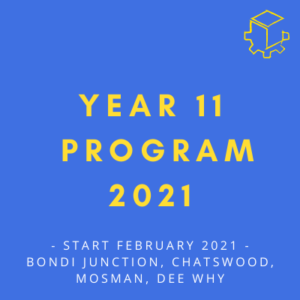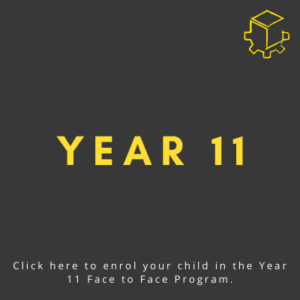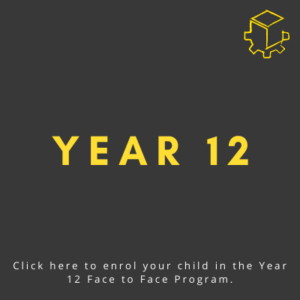Getting a great mark in HSC business studies is achievable for everyone with the right approach to effective studying. There is a widespread perception that if you learn the business studies syllabus you are guaranteed 70%. While the syllabus is of undeniable importance in this course there is more you should be doing to achieve that mark you are really capable of.
HSC Business Studies relies on understanding key definitions and frameworks fluently and importantly being able to apply these to real business case studies. Having a strong understanding of definitions is just, if not more important than knowing the precise layout of the syllabus, so make sure time is invested into this.
Multiple-Choice
The multiple-choice component of this exam is generally pretty straightforward. It relies primarily on testing those fundamental definitions of each of the four syllabus topics – operations, marketing, finance and human resources. Also be prepared for some tables with figures such as sales and financial ratios where you will be asked to assess business success and effectiveness of programs. This may require some simple calculations!
It will be specific and there will be only minor differences between answers. Therefore having a good understanding of content is so important to ensure you are confident when choosing between those 2 answers you just can’t distinguish between. As a rule of thumb, usually in business studies the simpler response is correct. Don’t get bogged down with sophisticated wording when the more obvious, simple answer is accurate. And as with all multiple choice questions – your first instinct is usually right.
Short Answer
Next in the exam is the short answer component. The SAQ part is composed of three questions, each of which includes questions taken from one of the key business areas, or the four syllabus topics. In general, you will be given a short business stimulus and then the question will be broken down into smaller parts for answering. Marks allocated to these parts vary from 2 to 6.
This part of the exam tests how well you can explain key definitions and elaborate on certain parts of the syllabus. Before answering a question, underline key words and then identify exactly where in the syllabus the answer will come from. This ensures you are not mixing up topics. If the question asks for STRATEGIES you have to provide these and not PROCESESS. Write with clarity and be succinct. Be sure to include the precise and accurate terminology that is used throughout the course to maximize marks. Finally, pay attention to text type and understand the important difference between for example, describe and analyse questions. For analytical questions you need to be pointing out advantages and disadvantages and drawing a relevant conclusion.
Section 3 – Stimulus based extended response
It is a fair assumption that the majority of the State will find the first two sections of the exam relatively easy. It is this section and section 4, where you can shine and show the marker that you know what you are talking about. The business report components are where you should be aiming to get a top mark of 18-20 to differentiate yourself and score a band 6.
Be familiar with the layout of a business report – structure is key!
- EXECUTIVE SUMMARY as the heading (underlined)
- Use the relevant syllabus dot points as your headings (underlined) throughout the point and answer the question systematically
- Use subheadings if required, for example if the question asks you to explain the marketing strategy use this as your heading and each of the 4 P’s as your subheadings
- Write clearly and briefly – you don’t need to use sophisticated language
- Use short paragraphs rather than longer ones
- Understand the text type that is being asked and answer according to that
- If the question is asking you to link to business success, you must define what ‘business success’ is for that business in the executive summary (is this increase in revenue, geographical expansion, new product development?) and throughout the report refer back to the achievement of that business success with evidence such as KPI’s, sales data etc.
- Finish with the CONCLUSION, giving a brief wrap up of what you ahev covered within the report
The section 3 report will provide you with a stimulus of a hypothetical business. You are then asked to address the business with reference to two of the four topics, for example operations and marketing.
When you first read the stimulus highlight key terms that you can link to syllabus dot points and then jot down what those syllabus points are. This will ensure that the syllabus is at the forefront of your mind and help you with the layout of the report. Next, come up with your structure and your headings and subheadings (if needed). Writing a good executive summary that addresses key points is also useful as if you get lost when writing your report you can refer back there for some direction.
The biggest mistake you could make with this report is forgetting to REFER TO THE STIMULUS. A good structure of each paragraph would be to define and outline the key theory, then address how it specifically relates to the business case study providing accurate and realistic examples.
Section 4 – Case Study based business report
The final section of the business studies exam is the business report where you are to refer to a business case you study throughout the year with your class. You will be a given a choice of two questions which each ask you about one of the key business functions from the syllabus topics – for example one could be HR and the other finance. The structure should be the same as section 3 – especially in terms of explaining key frameworks then elaborating with business specific examples.
My biggest piece of advice for this component is to stay up to date with current news related to your business case study. Make sure you know if they are launching a new product, have a new CEO, have a new slogan or logo. As most schools seem to choose Apple or Qantas having unique information to set your response apart from other students will show you went above and beyond and did independent research. You need to include some information to keep the marker engaged and not bored!
Something helpful that will save you time and stress is to understand the linkages between the syllabus. This will generally come once you’ve learnt all the content and really understand and can apply it. Ask yourself if a marketing strategy your business adopts can employ promotion and personal selling? Is a CSR strategy also part of global sourcing operations? Being able to draw these comparisons indicates you really do understand the course. Importantly, it also means that you can use your case study examples across multiple topics so you don’t need to remember as many, how great!
I hope this blog has been helpful and that you can understand that business studies, is more than just the syllabus.
Good luck!
Lauren Ferrarin, Junior Coach



